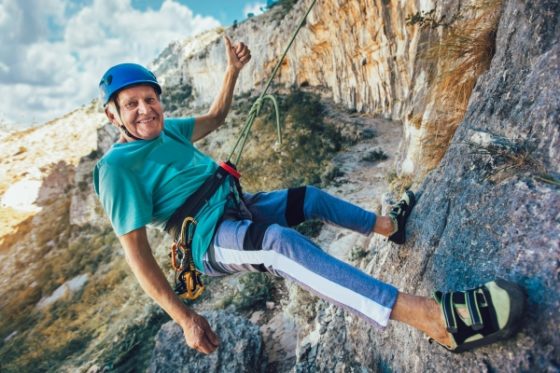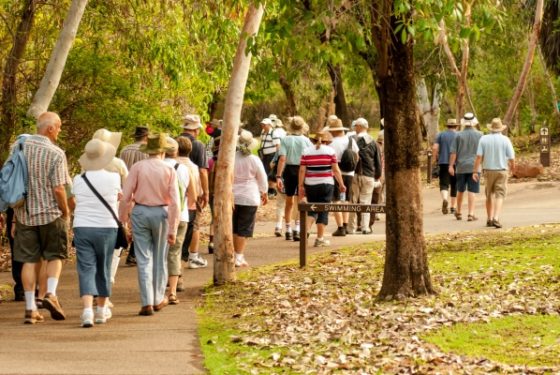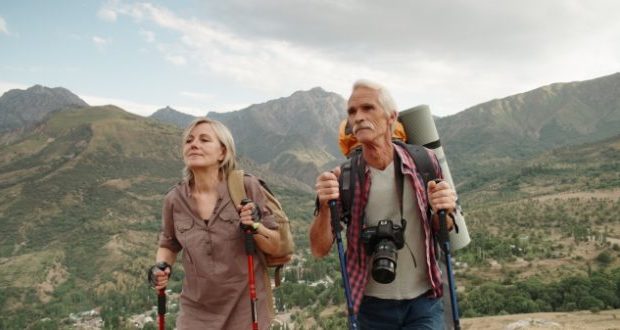Ready For A Hike? Eleven Safety Tips For Seniors
You don’t have to be young to enjoy hiking. While your body might not feel as limber in its old age, it doesn’t mean it can’t get out and put down some miles in the woods.
You can hike without putting your health at risk. Whether it’s having a physical with your doctor, wearing ID bracelets, or researching your hiking trail of choice, you can stay safe while exercising in the great outdoors. So, ready for a hike? Here are eleven safety tips for active seniors.
1. Meet with your Doctor
Before going out for a major hike, you need to make sure your body is prepared to handle the stress. Schedule a physical with your primary care physician to determine any underlying conditions or concerns that should be addressed first. Once they’ve cleared you for exercise, you’re good to hit the trail — just about.
2. Start Easy
Don’t start your exercise journey by running 100 mph right out of the gate. Take it easy to start, instead. That could look like going for short walks around your neighborhood or doing some light weightlifting in your home. It’s important you condition yourself before heading out for the trail.

3. Stretch it Out
Just as you need to condition your body before hiking, you need to ensure that you are stretched out additionally. Now, here’s the thing: You need to stretch after warming up.
Your old gym teacher might have taught you otherwise, but stretching stiff, cold muscles could lead to serious injury. So instead, do a brief warm-up, such as some light hiking or quick pacing, to get your blood pumping. The best rule of thumb is to go until you break a sweat. Once you have, it’s time to stretch.
4. Know your Hike
Any trail can do, but you must hike the trail meant for you. Know your pace, strength, and ability. If a hike is listed as being meant for experts and you’re just a beginner, finding a trail more suitable to your needs is best.
Meanwhile, listen to your body while you’re out on the trail. Are you feeling tired? Don’t feel ashamed to stop and take a break. It’s better to stay safe than to overwork yourself and put your health at risk.
5. Wear Proper Clothing
Preparing for a hike is as much about dressing comfortably as it is about being mentally prepared. A short hike in improper clothing can be especially painful for your body. We recommend some of the following combinations of clothing:
- A summer hat
- Moisture-wicking clothing
- A wind jacket
- A winter jacket
- Gloves
- A winter hat
- Shorts
- Hiking boots
- Merino wool socks
- Sunscreen
- Bug spray
6. Check the Weather of the Day
Before you head out for your hike, make sure to check the weather for wherever you’ll be hiking. While you don’t need perfect weather to go on a hike, it will determine how you plan. For example, bring along a raincoat and umbrella if you’re expecting rain; wear an extra layer of clothes and gloves and hats if there will be snow, and wear a pair of GoreTex boots if it rained heavily the night before.
If the weather does look especially bad, consider calling for a raincheck and reschedule your hike for a clearer day.
7. Let Someone Know where you’re Going
If you’re hiking alone, let someone close to you know where you’re going. Let them know exactly what trail you’ll be on, when you’ll be heading out and when you expect to be done. Furthermore, inform them of where you’re parked once you’re there. Then, if they don’t hear from you, they can contact local emergency services to search for you to ensure you’re safe.
8. Wear a Medical Bracelet
Seniors are unfortunately at a higher risk for accidents, especially when it comes to medical emergencies. Exercising as a senior is great for your health, but it can bring some health issues along with it. In the event of a medical emergency, you need to make sure you’re protected.
Medical bracelets can keep you safe whenever a medical emergency strikes, allowing you to carry your medical ID with you wherever you go. And if you’re unconscious, passersby can consult your medical ID and contact EMS to ensure you receive adequate medical attention.
9. Carry Food and Water
Hydration is necessary for any hiker, especially for seniors getting outside. Dehydration can cause serious issues while being active. Regularly drinking water can keep you mentally sharp while exercising, along with keeping you physically energized and stable.
Consider bringing along a small snack, too, depending on the length of your hike. That extra boost of carbs, sugar, and protein can be essential to getting you to put one foot in front of the other as you go.
10. Use a Walking Stick or Trekking Pole
What’s a more classic look than the active senior with a big walking stick? There they go! How cool would it be to be that admirable person?
If you can’t find a suitable walking stick, trekking poles are excellent because they provide you with highly engineered support on the most difficult trails. And even if you’re taking on a relatively flat trail, it’s smart to take along some poles, as they provide extra sustainability if you get tired.

11. Hike with Others
The best way to stay safe on the trail is to hike with others. But, while you might feel safe hiking on your own, you never know what might happen. An ID bracelet can protect you if you’re by yourself, but you’ll still be in trouble if no one else is around.
It’s in your best interest to go hiking with some close friends or your spouse and family. Not only can they keep you motivated through tougher sections, but they can help you out if you ever have something happen.
Getting Active while Staying Safe
Your later years don’t have to be spent remaining sedentary at home. Instead, make the most of your retirement by getting outside, whether on your own or with your loved ones. Go for a hike, work in the garden, or stroll in the park. Whatever your activity, live it to its best.
Here are four hiking risks to be aware of.






